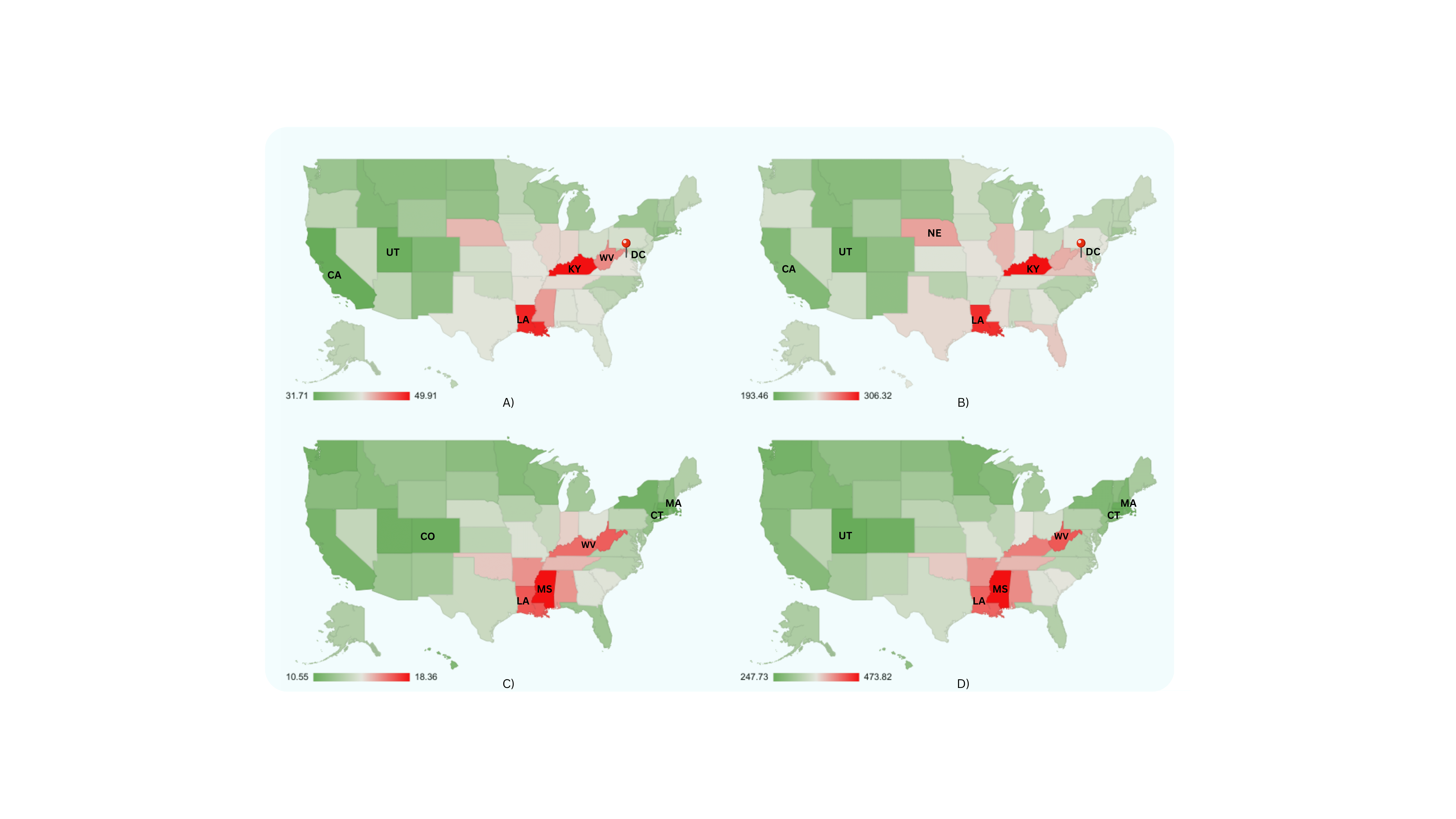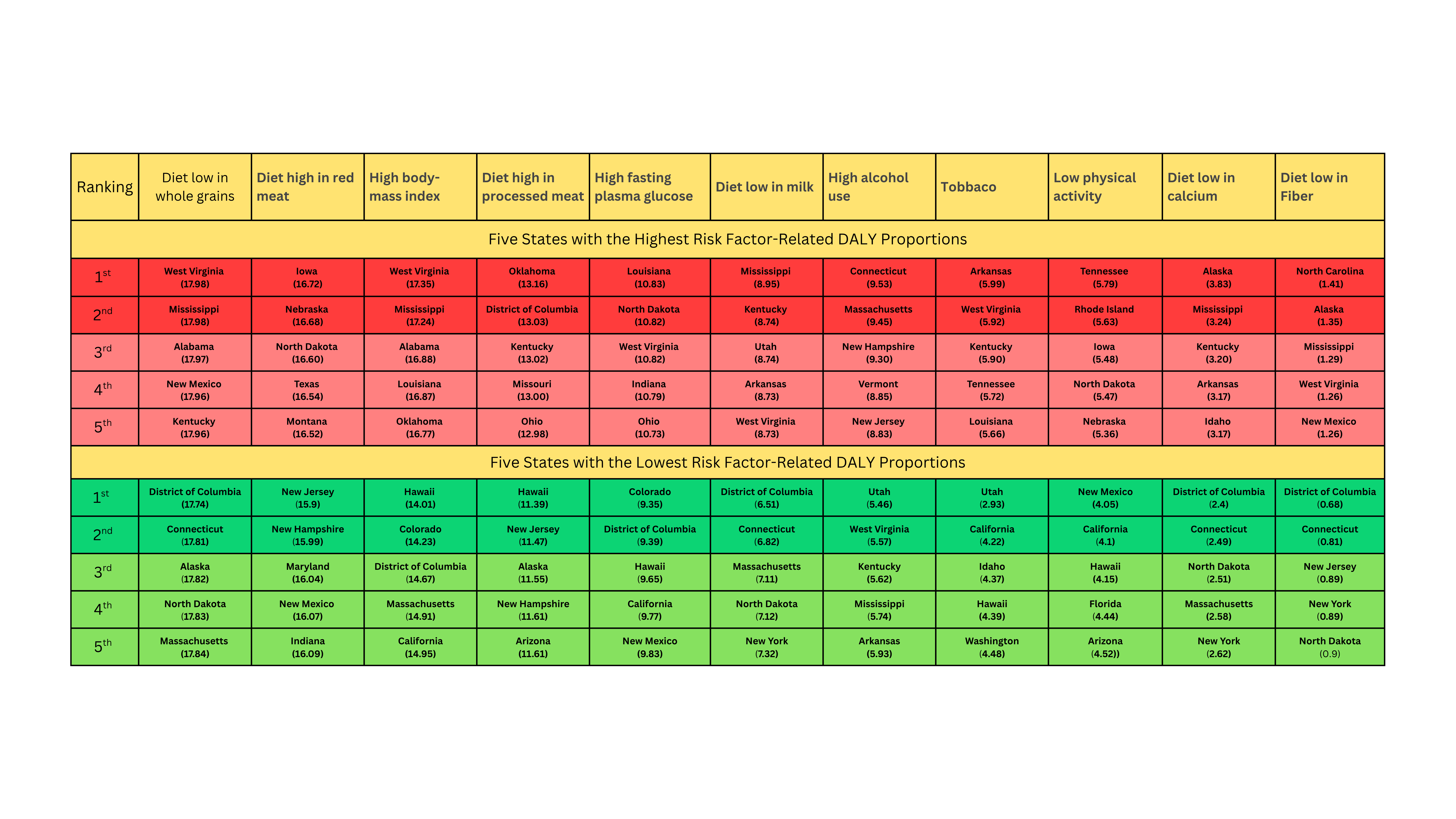Sunday Poster Session
Category: Colon
P0303 - Disparities in Colorectal Cancer Burden and Risk by State and Sex in the United States: A Comprehensive Analysis of GBD 2021 Data

Rithish Nimmagadda, MBBS (he/him/his)
One Brooklyn Health-Interfaith Medical Center
Brooklyn, NY
Presenting Author(s)
1One Brooklyn Health-Interfaith Medical Center, Brooklyn, NY; 2School of Medicine, Xiamen University., Kakinada, Andhra Pradesh, India; 3BronxCare Health System, New York City, NY; 4St. Mary's General Hospital, New York Medical College, Poughkeepsie, NY; 5School of Medicine, Xiamen University, Kanigiii, Andhra Pradesh, India; 6NYU Langone Health, New York, NY; 7Cleveland Clinic, Cleveland, OH
Introduction:
Colorectal cancer (CRC) remains a significant public health concern in the United States, with notable geographic variation in its incidence, mortality, and associated risk factors. This study provides a comprehensive state-level assessment of CRC burden and risk profiles utilizing data from the Global Burden of Disease (GBD) 2021 study.
Methods:
We extracted age-standardized CRC incidence, prevalence, mortality, and disability-adjusted life year (DALY) rates for all 50 states from the GBD 2021 database. The top and bottom three states were identified for each metric. DALYs were stratified by sex to assess gender disparities. We also analyzed the contribution of major behavioral, metabolic, and dietary risk factors to CRC DALYs at the state level.
Results: Kentucky and Louisiana consistently ranked among the top three for CRC incidence, prevalence, and DALY burden. Mississippi had the highest CRC mortality (18.36 per 100,000) and DALY rate (473.82 per 100,000), while California, Utah, and D.C. had the lowest incidence and prevalence. Males had higher CRC prevalence and DALY rates than females in all states. The highest male prevalence was in Kentucky (348.63 per 100,000); the lowest was in D.C. (221.24 per 100,000). Risk factor analysis showed diet low in whole grains contributed most to national CRC DALYs (56.53 per 100,000). Males had higher DALY rates across most risk factors, but low physical activity and diets low in milk and calcium were more strongly associated with female CRC burden. The greatest gender disparities were linked to alcohol use.
Discussion: This state-level analysis based on GBD 2021 data reveals substantial geographic and gender-based disparities in the burden of colorectal cancer across the United States. Southern states exhibit a disproportionately high CRC burden, largely attributable to modifiable metabolic and dietary risk factors. These findings underscore the critical need for state-specific, gender-sensitive preventive strategies, including expanded access to screening and regionally tailored interventions targeting high-risk dietary and lifestyle behaviors. 
Figure: Figure 1: Choropleth maps showing the geographic distribution of colorectal cancer burden across U.S. states using age-standardized rates from GBD data.
(A) Incidence rate
(B) Prevalence rate
(C) Death rate
(D) DALY rate
Red indicates higher burden; green indicates lower burden.
Figure: Figure 2: Heat map showing age-standardized DALY percentages attributable to major modifiable risk factors for colorectal cancer across U.S. states. Risk factors are ordered left to right by descending national burden. For each, the five states with the highest (top, red) and lowest (bottom, green) DALY proportions are displayed.
Disclosures:
Rithish Nimmagadda indicated no relevant financial relationships.
Sameer Majety indicated no relevant financial relationships.
Pragathi Munnangi indicated no relevant financial relationships.
Nayanika Tummala indicated no relevant financial relationships.
Niyaz Shaik indicated no relevant financial relationships.
Jahnavi Udaikumar indicated no relevant financial relationships.
Vineeth Potluri indicated no relevant financial relationships.
Rithish Nimmagadda, MBBS1, Sameer Majety, MBBS2, Pragathi Munnangi, MD3, Nayanika Tummala, MD4, Niyaz Shaik, 5, Jahnavi Udaikumar, MD6, Vineeth Potluri, MD7. P0303 - Disparities in Colorectal Cancer Burden and Risk by State and Sex in the United States: A Comprehensive Analysis of GBD 2021 Data, ACG 2025 Annual Scientific Meeting Abstracts. Phoenix, AZ: American College of Gastroenterology.

